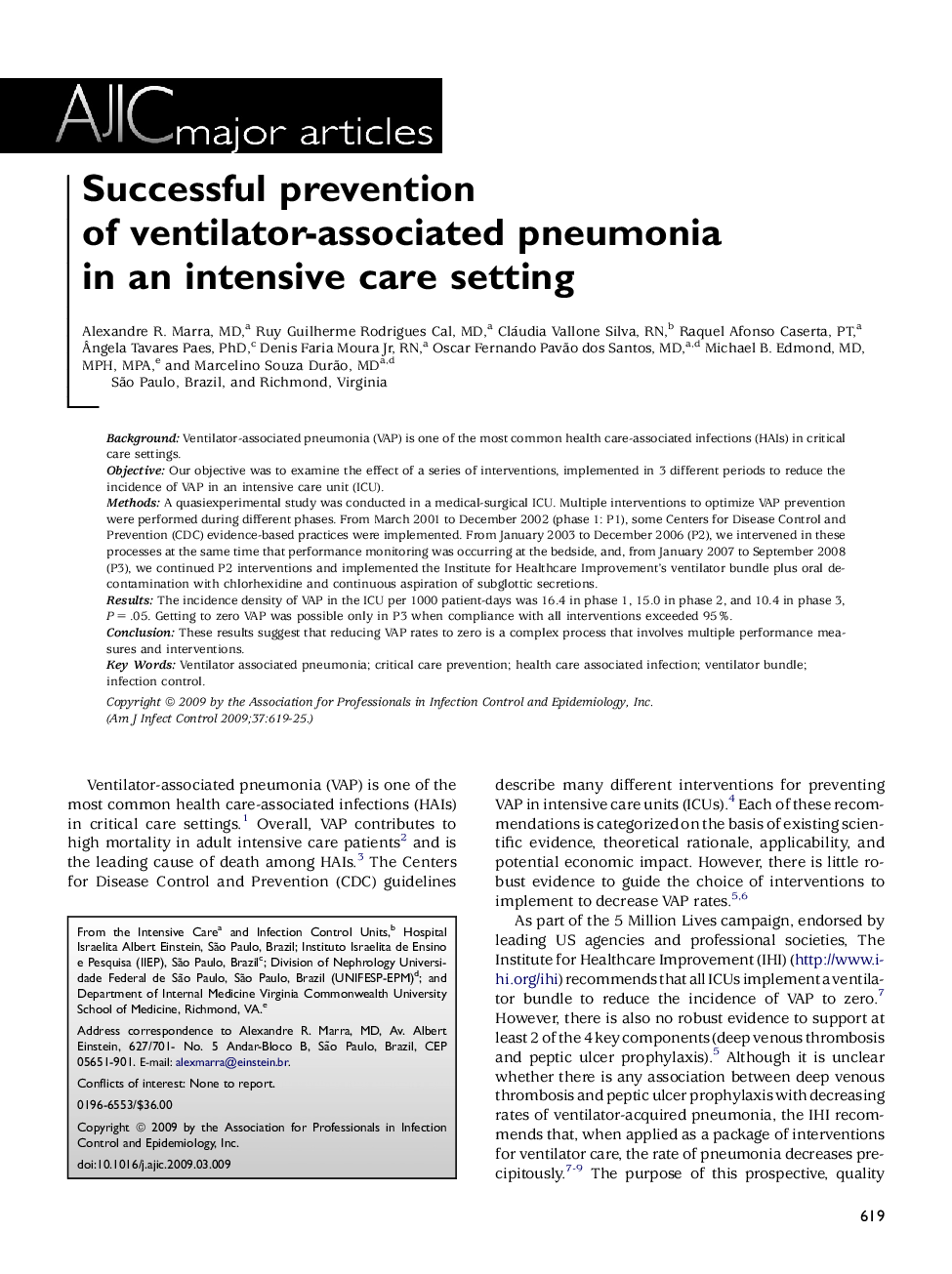| Article ID | Journal | Published Year | Pages | File Type |
|---|---|---|---|---|
| 2638447 | American Journal of Infection Control | 2009 | 7 Pages |
BackgroundVentilator-associated pneumonia (VAP) is one of the most common health care-associated infections (HAIs) in critical care settings.ObjectiveOur objective was to examine the effect of a series of interventions, implemented in 3 different periods to reduce the incidence of VAP in an intensive care unit (ICU).MethodsA quasiexperimental study was conducted in a medical-surgical ICU. Multiple interventions to optimize VAP prevention were performed during different phases. From March 2001 to December 2002 (phase 1: P1), some Centers for Disease Control and Prevention (CDC) evidence-based practices were implemented. From January 2003 to December 2006 (P2), we intervened in these processes at the same time that performance monitoring was occurring at the bedside, and, from January 2007 to September 2008 (P3), we continued P2 interventions and implemented the Institute for Healthcare Improvement's ventilator bundle plus oral decontamination with chlorhexidine and continuous aspiration of subglottic secretions.ResultsThe incidence density of VAP in the ICU per 1000 patient-days was 16.4 in phase 1, 15.0 in phase 2, and 10.4 in phase 3, P = .05. Getting to zero VAP was possible only in P3 when compliance with all interventions exceeded 95%.ConclusionThese results suggest that reducing VAP rates to zero is a complex process that involves multiple performance measures and interventions.
